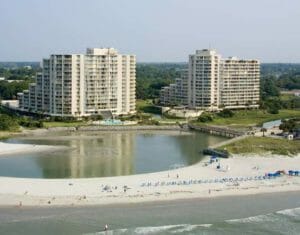5 of Tom Jackson’s Best in Myrtle Beach
Tom Jackson’s mark on South Carolina on golf course architecture is extraordinary, with nearly half of his more than 100 designs residing in the Palmetto State. And while some renowned architects have a small handful of signature designs along the Grand Strand, Jackson’s name serves as the signature to five notable designs on the Myrtle Beach golf scene.
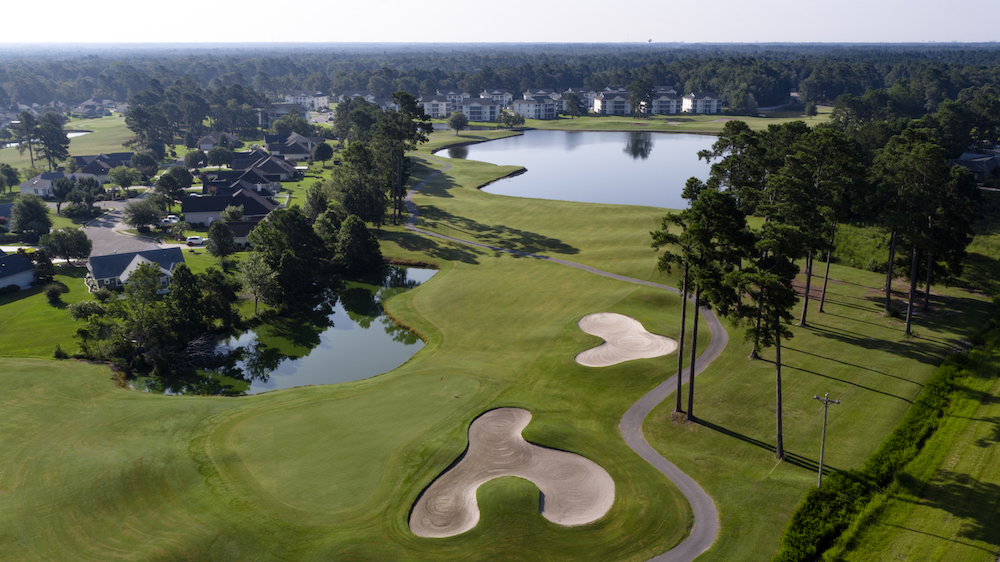
A 27-hole, Scottish-links-style facility playing to a par 36 on each nine (Highlands, Meadows and Woodlands), Aberdeen Country Club is a place where Jackson offers a combination of challenges from which to choose. Water hazards are a feature on 23 of 27 holes, and golfers have to deal with a healthy dose of bunkers along with centuries-old Southern oaks, weeping willows and sugar maples that define most holes. Rolling hills along fairways and around greens add to the beauty and challenge of Aberdeen, with flat stances often hard to be found, even in the fairway. A round at Aberdeen is like taking a step from Myrtle Beach straight into Scotland.
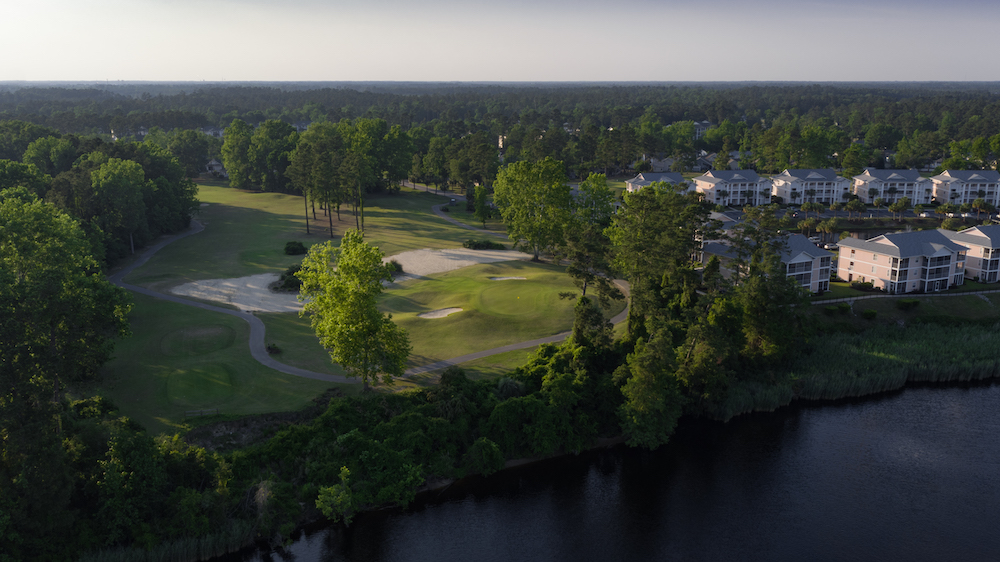
River Oaks Golf Club does not set out to punish players with an ultra-difficult layout that penalizes any shot hit ever so slightly off line, instead providing a player-friendly experience that still has its challenging moments. The Fox side presents a mix of reachable par 5s, creative, stern par 4s and par 3s that are relatively short and gettable. The side’s 3rd hole is one such par 3 and is extra notable because of the exceptional view players get from the tee box, with the Intracoastal Waterway lurking in the background.
River Oaks’ Otter nine presents a layout that can be more challenging for players. For example, the side’s 8th hole is a difficult par 4 (perhaps the most challenging hole on the property), a dogleg right with a fairway protected to the right by a water hazard and to the left by trees and out-of-bounds. Hitting a good tee shot here is an absolute must, and if accomplished, leaves a mid- to long-iron approach into a raised green protected by a bunker on the front-left. Still, River Oaks is a great playing experience for golfers of all skill levels.
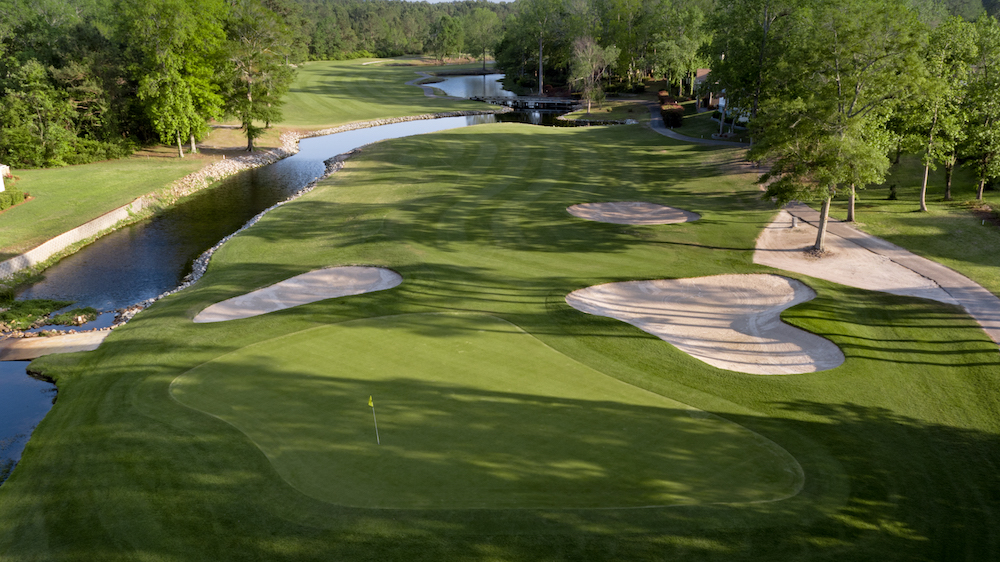
River Hills is situated in the historic seaside village of Little River, where Jackson designed a course that offers players perfectly groomed fairways meandering through picturesque, heavily wooded, rolling terrain. Its challenging design presents frequent elevation changes not often seen just seconds from the coastline, as well as non-parallel fairways and strategic greenside bunkering. But with four sets of tees from which to choose, it’s a great trek and one where you can shoot a good score if you play your best. It also is one of the more well-maintained, well-marked courses on the Strand, and now features a freshly updated grillroom inside the clubhouse ready to cater to you and your group’s needs.
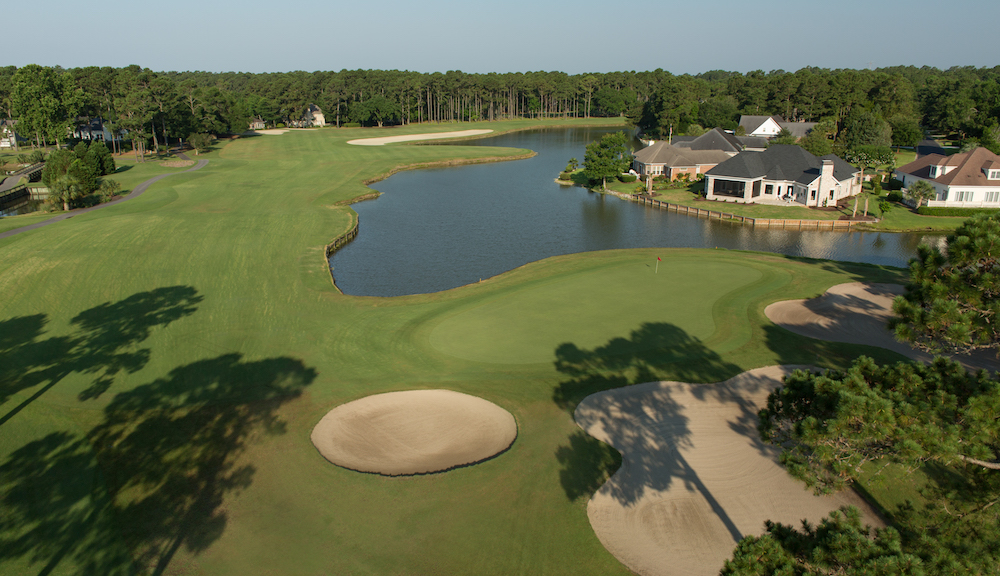
Jackson left his indelible mark along the South Strand with River Club, one of the more challenging courses in Myrtle Beach. True to its name, it features water on 15 of 18 holes, in addition to more than 100 sand traps. Among the course’s defining holes, the 413-yard (all distances back tees), par-4 9th doesn’t leave a lot of room for error off the tee because there is a bunker on the right side and out-of-bounds on the left. The par-3 14th is a 186-yard shot played to a beautiful island green, and while the hole isn’t particularly long, danger still lurks from every angle.
River Club’s 18th is one of the more famous par 5s and finishing holes in Myrtle Beach golf, with a tee shot so daunting – yet potentially rewarding – it will have you thinking about it long before you make it to the tee box. The dogleg left features a pair of bunkers on each side of the fairway off the tee, and a lake that wraps the green’s front and left sides. First, players must launch their ball over the lake (a long, forced carry) to a fairway that will allow, if successful, just a mid-iron into the green. There’s certainly a lot of risk involved here, but the reward for earning this approach shot is the prospect of carding an eagle to end your day.
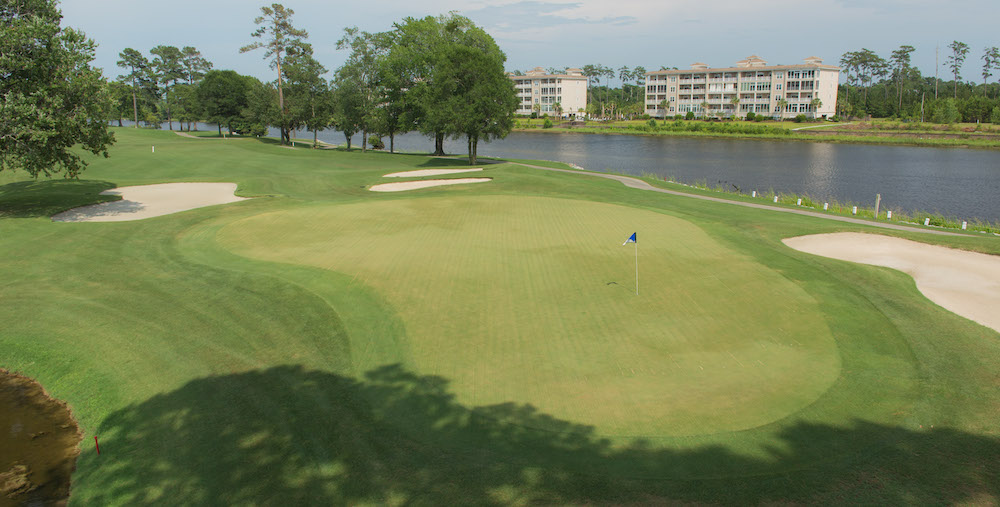
Arrowhead Country Club features the combined effort of Jackson and co-architect Raymond Floyd, who teamed to build a marvelous 27-hole facility with several holes winding along the scenic Intercoastal. Known for the quality of its greens no matter the time of year, Arrowhead’s three sides (Lakes, Waterway and Cypress) each possess their own unique quality.
Built into the sandhills bordering the Intracoastal, the Lakes nine demands precise shot making and daring nerves. No Jackson course would be without such a challenge. The par-5 3rd hole is particularly tough with its bulk-headed green protected by water on the front side. You can play it safe to the right, or go for it on the left.
The Waterway nine is a classic design featuring wide fairways, large greens and elevated tee boxes. Jackson’s philosophy of giving a visual perspective of how to play each hole is quite evident here, most notably at the par-4, 387-yard 5th hole majestically bordering the Intracoastal.
Arrowhead’s Cypress nine winds through a natural Carolina hardwood wetland. Taking great care to preserve the natural surroundings, some holes are bordered and even play through these naturally beautiful areas. Holes 2, 3 and 4 have been described as three of the most scenic holes on the entire Grand Strand, featuring bulkhead-protected greens, gradually undulating fairways and vast waste areas. With these three fantastic nines, Arrowhead may be one of the most memorable days of golf you ever experience.

